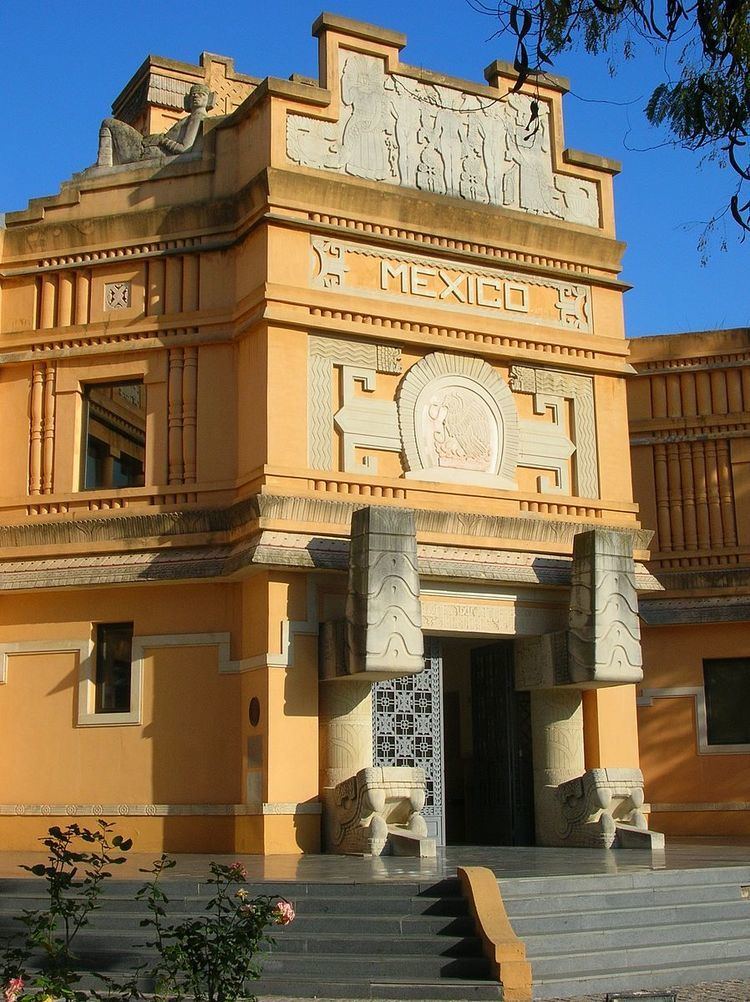Location Avenida Palmera Construction stopped 1928 | Construction started 1927 | |
 | ||
Architect Manuel María Amábilis Domínguez Similar Pabellón Real, Museum of Arts and Traditions, Plaza de América, La Casa de la Ciencia de Sevilla, Archeological Museum of Seville | ||
The Mexican Pavilion from the Ibero-American Exposition of 1929 is located on Avenida de la Palmera in Seville, next to the Brazilian Pavilion, and today hosts a branch of the University of Seville.
History
Its construction took place on a 5.442 km² piece of ground ceded in 1926, while labor was in charge of the Mexican Secretary of Industry, Commerce and Labour, directed by Luis N. Morones. Its architect was Manuel María Amábilis Domínguez, from Mérida, Yucatán, who proposed the project named "ITZA" in collaboration with two Yucatecan artists that he had met in Paris, Leopoldo Tommasi López (in charge of the sculptures) and Víctor Manuel Reyes (in charge of the drawings). The building is inspired on the Mayan and Toltec cultures, both originating in Yucatán. The construction began at the beginning of 1927 and ended on August 1928, despite having undergone some renovations in its interior. On its facade appear some reliefs with allegories and sculptures, and by the time of the exposition the interior was very profusely decorated and packed with craft objects. The building also has a backyard with a fountain decorated with Mayan and Toltec motives.
